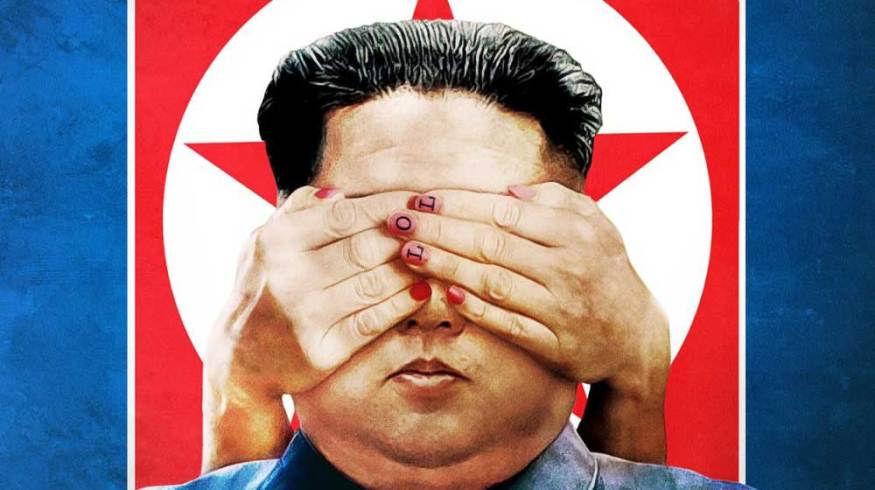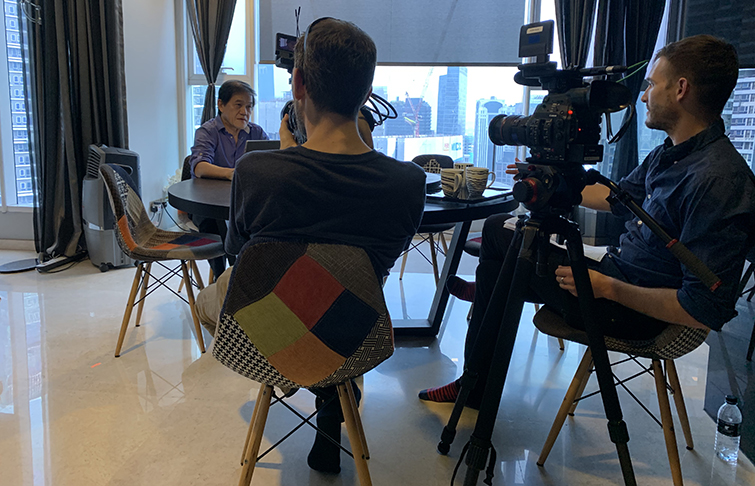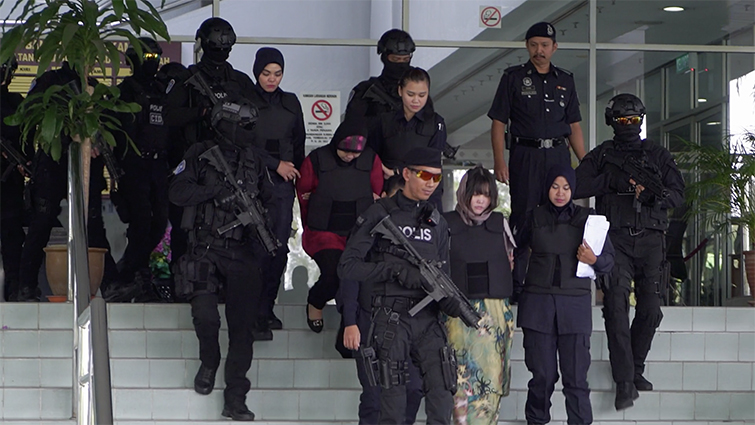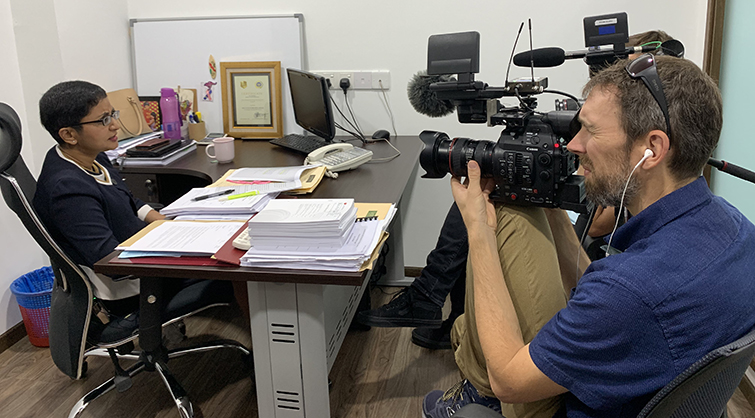
An Interview with “Assassins” Cinematographer John Benam
To many, one of the appeals of both documentary viewing and filmmaking is the danger factor. Documentaries explore some of the most important topics of their time. And, quite often, these topics can be controversial, as well as even dangerous to delve into. This most certainly is the case with the recently released documentary Assassins, which premiered at the Sundance Film Festival.
Assassins tells the story of how “the audacious murder of the brother of North Korea’s Supreme Leader Kim Jong-un, in a crowded Malaysian airport, sparked a worldwide media frenzy.” And, at the center of the investigation are two young women who, as the documentary presents them, are either “cold-blooded killers or unwitting pawns in a political assassination.”
As you could expect, filming such an unheralded story is quite an endeavor for a documentary film crew. We chatted with Assassins cinematographer John Benam about his experiences, working with the Canon C300 Mk II, and his advice for tackling such serious and dangerous subjects.
Finding Bizarre and Dangerous Stories

Assassins is a terrific documentary offering a fascinating look into the seedy world of politics and assassination. We asked John Benam how this project came about and how he first got involved.
Director Ryan White and producer Jessica Hargrave from Tripod Media started a collaboration with journalist Doug Bock Clark, who had written an extensive GQ article about the assassination in 2017. I’ve worked with them on other films (Netflix’s The Keepers) and they asked me to come on as the DP of this effort. I get excited about mysterious and bizarre stories like this. So, when they sent me the article for reference, I was immediately hooked and ready to hop on a plane.
-John Benam
As you can see in the trailer, Assassins tells a dense, yet fascinating, real-life story that includes many twists and turns along the way. And, just from sheer political ramifications, it’s not a subject to delve into lightly. For experienced documentarians like John Benam, who has worked in documentary and nature filmmaking for several years, along with director Ryan White and producer Jessica Hargrave, who have shot and produced many docs of their own, it’s truly a bizarre and dangerous journey.
However, as any experienced documentary filmmaker will tell you, while finding the right documentary subject is key, it’s the story underneath that’s most crucial. To tell the story of Assassins, Benam, White, and team had to put on their detective hats as well as their cinematic storyteller’s lens to help unravel all the elements and characters.
Mixing Documentary Media Types

The film contains both trial coverage and grainy security camera video with documentary interviews. So, how did Benam approach this challenge of finding the right balance?
As the cameraperson, I wasn’t involved in the editing, but I know how hard the team, led by Helen Kearns, worked to find the best ways to integrate the variety of video sources, both stock and original. I could easily see it was not an easy task.
-John Benam
As we’ve learned before in interviews with other contemporary documentarians like Bobbito Garcia and his street basketball feature Rock Rubber 45s, one unique challenge to weaving stories about real-life people and events is a necessity of working with mixed media types from many different sources. Assassins is no different and actually has many other unique problems, like working with grainy security camera footage, as well as combining organically recorded interviews with other archival content.
Speaking as a cameraperson, while Benam might not have been part of the archiving and editorial process, he was still one of the many filmmakers tasked with documenting interviews and footage that—when combined with the grainy surveillance footage—helped to bring all the testimonies and developments of the story to life.
Shooting with the Canon C300 Mk II

The documentary interviews and footage have a distinct and dark look. Benam discusses the cameras and gear he used to shoot with and why.
Ryan and I love the Canon C300 Mk II for a variety of reasons. It has a rich, textured video with lots of latitude in the lower light areas. We also wanted to be off the radar, and the form factor of this kit is easily concealed and lower profile. You can keep the camera off your shoulder and be less noticeable to the general public . . . attracting less attention. Certain places we filmed did not want us using cameras at all. So, on occasion, I would shoot with the Sony a7S II. I could look like a tourist, but still shoot decent video with what can be portrayed as a “stills” camera.
-John Benam
Since it was released in 2015, the Canon C300 Mk II has long been a favorite of documentary filmmakers and professional videographers alike. With its wide dynamic range and versatile build, it really is one of the best cinema camera options for riggers of long interviews and run-and-gun videography. Since this documentary was intended for a festival run at Sundance, as well as for theatrical and streaming online, having a solid cinema camera that could shoot 4K and high frame rate was a must.
You can see in the trailer how Benam was able to use the camera to help bring out some of the dark and sinister looks for many of their interview and B-roll setups, even in situations that were obviously low-light and often without professional lighting behind him.
Accessing the Mood of the Film

Assassins tackles some extremely heavy, but important, subjects. How did Benam approach shooting interviews with such potentially serious real-world repercussions?
Ryan has the ability to really get people to open up to him. It’s magical. For me, technically, I’m a minimalist. I prefer accentuating practical lighting and making existing light do the work, as much as possible. I feel like it puts you (the viewer) into the true space and time of the subject—accessing the mood and real feeling of the space in which they live/work/eat/exist. I don’t like presenting mounds of gear and equipment to the subjects. I feel like the more gear I haul into their space, the more it amps up the tension and anxiety, or makes them nervous. Give me a couple good, small lights, boom mic and wireless kit, and that’s about it.
-John Benam
As you can see in several of these behind-the-scenes photos from the interviews of Assassins, Benam was very often operating on one-man or minimal crew setups. However, while there might be occasional needs for shooting interviews solo, he was able to work with a talented director and producer to help run the interviews and make the subjects comfortable.
I think it’s really interesting how Benam talks about accessing the mood and real feelings of the space as a goal for any documentarian trying to capture people and moments as organically as possible. Especially when dealing with important issues that can have serious ramifications, the last thing a subject wants to be worried about is how they might look on camera, but rather, to be concentrating on engaging in a focused conversation with a director/producer/interviewer.
For more filmmaker interviews and documentary insights, check out these articles below.
- Finding Comedy in the Real World with “How to with John Wilson”
- Cinematography Tips for Covering Your Master Shot
- Interview: Shooting a Parody Commercial with the Foo Fighters
- 5 Principles of Documentary Filmmaking to Use on Your Next Film
- How Music Helped to Motivate This DIY Coronavirus Documentary
Cover image via Greenwich Entertainment.






